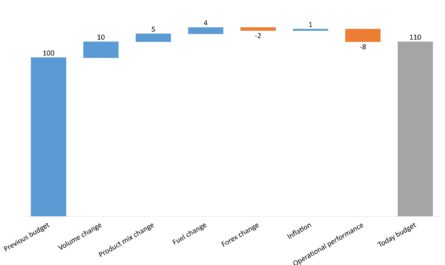In the complex world of production and inventory management, an essential component is Production Planning and Inventory Control (PPIC). PPIC plays a pivotal role in ensuring that production runs efficiently and that inventory levels are optimized.
However, one common challenge that PPIC faces is dealing with inaccurate sales forecasts. These inaccurate forecasts can have a significant impact on production planning and material management.
In this blog post, we will explore the issues arising from inaccurate sales forecasts in PPIC and discuss strategies that can help mitigate the challenges.
Before we go further into this topic, don’t forget to follow my LinkedIn account. You’ll get more helpful insights on supply chain management there.
Table of Contents
The Significance of Accurate Sales Forecasts
Sales forecasts are the foundation upon which the entire PPIC process is built. They serve as the basis for production schedules, inventory management, and resource allocation.

Accurate sales forecasts enable a company to:
- Optimize Inventory Levels: With accurate sales forecasts, companies can ensure that they have the right amount of inventory on hand to meet customer demand without overstocking or understocking.
- Efficient Production Scheduling: Accurate forecasts allow for better production scheduling, reducing the likelihood of production delays or excess capacity.
- Resource Allocation: Knowing what products will be in demand helps allocate resources effectively, from labor to materials, thus reducing waste and cost.
However, when sales forecasts are consistently inaccurate, it creates a ripple effect that can disrupt the entire production and inventory management process.
The Challenges of Inaccurate Sales Forecasts in PPIC
- Excess Inventory: Overestimating demand leads to overproduction and excess inventory, tying up capital and storage space.
- Production Delays: Underestimating demand can result in production delays as companies struggle to meet unexpected spikes in demand.
- Inefficient Resource Allocation: Misallocating resources due to inaccurate forecasts can lead to inefficiencies in production and increased costs.
- Customer Dissatisfaction: Failing to meet customer demand due to inaccurate forecasts can lead to lost sales and customer dissatisfaction.
- Increased Holding Costs: Maintaining excess inventory incurs holding costs, including storage, insurance, and depreciation, further impacting profitability.
So, what should PPIC do when they get sales forecasts that are often inaccurate? Let’s explore some strategies.
You might also like:
- How to Improve Overall Equipment Effectiveness (OEE)
- The Vital Role of Production Planning and Inventory Control (PPIC): Ensuring Efficiency and Success
Strategies for Dealing with Inaccurate Sales Forecasts
- Collaborate with Sales and Marketing Teams: Encourage open communication between the PPIC team and the sales and marketing departments. Sales and marketing teams often have valuable insights into market trends and customer behavior that can improve the accuracy of forecasts.
- Implement Forecasting Software: Utilize advanced forecasting software and tools that incorporate data analytics and machine learning algorithms. These tools can help identify patterns and trends that may not be evident through traditional forecasting methods.
- Use Multiple Forecasting Methods: Implement a combination of forecasting methods, such as time-series analysis, causal modeling, and judgmental forecasting. Diversifying your approach can provide more accurate predictions.
- Regularly Update Forecasts: Recognize that sales forecasts are not static. Regularly update forecasts based on new data, market changes, and emerging trends. A dynamic approach allows for agility in production planning.
- Safety Stock Management: Maintain safety stock levels to buffer against forecast errors. This ensures that you can still meet customer demand even when forecasts are off the mark.
- Continuous Improvement: Establish a culture of continuous improvement within the PPIC team. Regularly review past forecasts and their accuracy, identifying areas for improvement in the forecasting process.
- Scenario Planning: Develop contingency plans for different sales scenarios. By considering multiple possible outcomes, you can be better prepared to adjust production plans as needed.
- Supplier Collaboration: Work closely with suppliers to establish flexible agreements that can accommodate changes in production requirements. A responsive supply chain can help mitigate the impact of inaccurate forecasts.
- Cross-Functional Training: Train PPIC team members in other relevant areas of the business, such as sales and marketing, to enhance their understanding of the factors that influence demand.
- Feedback Loops: Establish feedback loops with customers to gather insights on their changing needs and preferences. Customer feedback can be invaluable in refining sales forecasts.
- Benchmarking: Compare your forecasting accuracy with industry benchmarks and best practices. This can help you identify areas where your organization can improve.
- Invest in Data Quality: Ensure that the data used for forecasting is accurate and up-to-date. Poor data quality can lead to unreliable forecasts.
Conclusion
Inaccurate sales forecasts can pose significant challenges for PPIC, impacting production planning and material management. However, with the right strategies in place, these challenges can be mitigated.
Collaborative efforts, advanced technology, and a commitment to continuous improvement are key to improving the accuracy of sales forecasts and ensuring that PPIC functions more effectively.
By embracing these strategies, organizations can navigate the uncertainties of the market with greater confidence and resilience.
I hope you find it helpful!Please share this article with your colleagues so they can also benefit. For more insights on supply chain management, follow my LinkedIn account. You’re free to use all articles on this blog for any purpose, even for commercial use, without needing to give credit.
 by
by 

